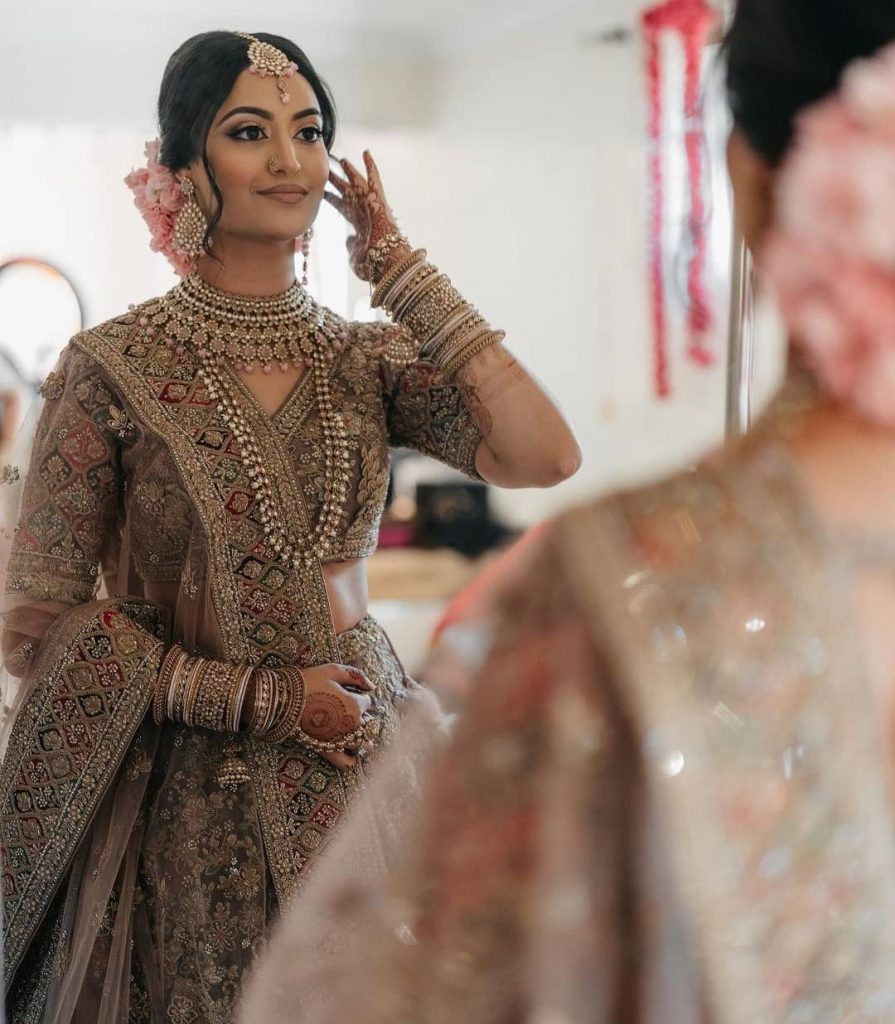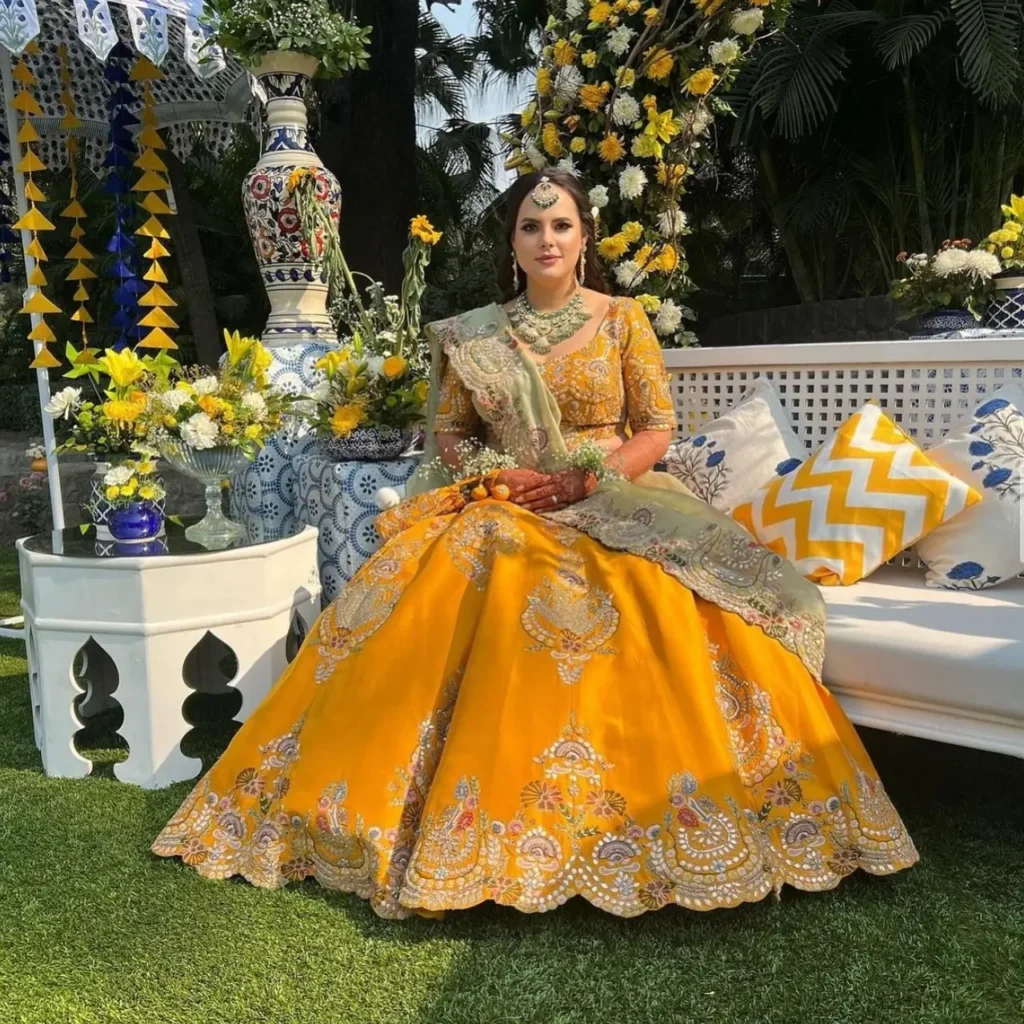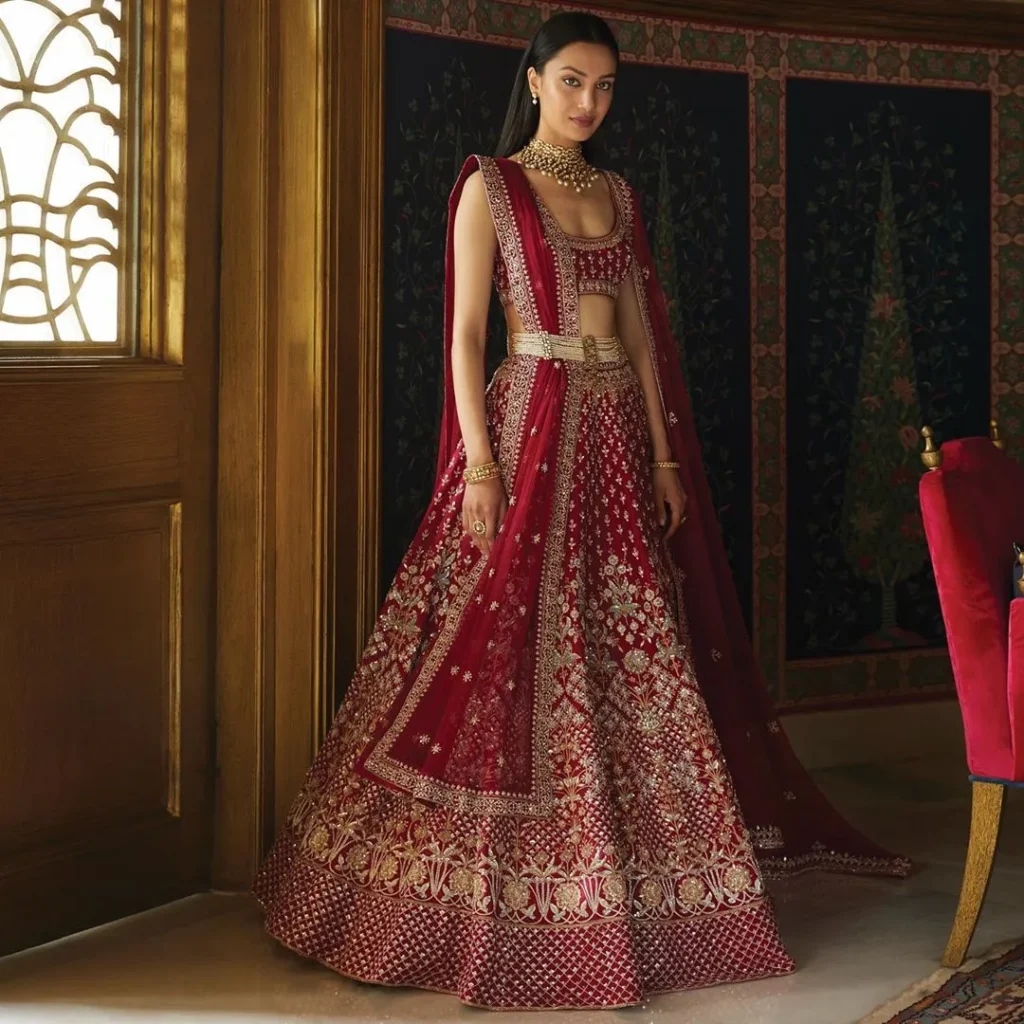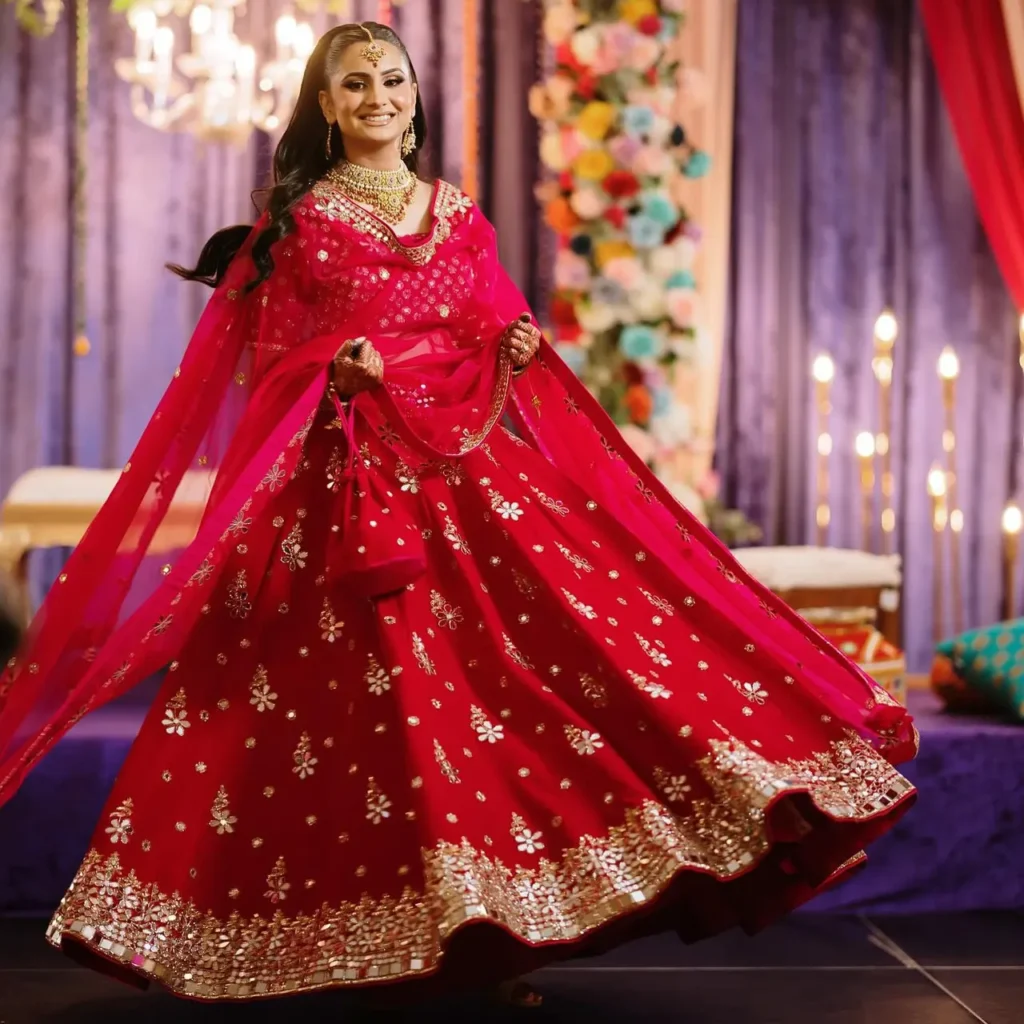Wearing a heavy dupatta with a salwar suit can elevate your outfit and bring a sense of elegance and traditional charm. While a heavy dupatta is often stunning and intricate, learning how to carry it comfortably and confidently is essential to ensure it complements your look rather than overwhelming it. In this article, we’ll dive into practical and stylish ways to wear a heavy dupatta with a salwar suit, and cover everything from draping techniques to styling tips.
Why Choose a Heavy Dupatta with a Salwar Suit?
The allure of a heavy dupatta lies in its rich detailing, luxurious feel, and intricate craftsmanship. When paired with a salwar suit, it can transform even the simplest of outfits into something more opulent. Whether you’re attending a wedding, a festival, or a formal gathering, a heavy dupatta can help you make a statement. From embroidery and sequins to heavy borders and embellishments, these dupattas bring an extra touch of elegance.

1. Choosing the Right Dupatta for Your Salwar Suit
Before diving into draping styles, it’s crucial to select the right dupatta for your outfit. Here are some tips to help you pick the perfect heavy dupatta:
Fabric Matters
A heavy dupatta can be made from various fabrics like silk, brocade, georgette, or velvet. Each fabric has its own feel, weight, and draping quality. For instance:
Silk and velvet dupattas offer a rich, regal look but can be heavier and harder to manage.
Georgette and chiffon dupattas provide a balance between elegance and ease, making them slightly easier to drape.
Match or Contrast?
When pairing a dupatta with your salwar suit, you can choose a matching or contrasting look:
Matching: A matching heavy dupatta can create a unified, graceful look.
Contrasting: A contrasting dupatta can add a vibrant pop of color and enhance the visual appeal of your outfit.
Design and Embellishments
Opt for designs that align with the occasion and your comfort level. Heavy dupattas may come with zari, zardozi, mirror work, or embroidery. For formal events, intricate designs are preferred, while lighter, simpler work may be better suited for semi-formal occasions.
2. Different Draping Styles for a Heavy Dupatta
Classic Draping on One Shoulder

The most straightforward and popular way to drape a heavy dupatta is by letting it fall over one shoulder. This style is easy to carry and showcases the dupatta’s designs.
Step 1: Hold the dupatta by one corner and place it on one shoulder.
Step 2: Let it flow naturally down the back and front.
Tip: Use a pin to secure the dupatta at the shoulder for better support.
Double-Sided Drape

In this style, both ends of the dupatta are brought forward, creating a symmetrical, formal look. This is ideal for showcasing heavily embroidered borders or intricate designs on both sides.
Step 1: Place the center of the dupatta on your head or shoulders.
Step 2: Bring both ends to the front and pin them at the shoulders or around your waist.
Belted Style for Extra Security

Using a belt with a heavy dupatta provides added support and allows you to keep your hands free, which is especially helpful for dancing or mingling.
Step 1: Drape the dupatta around your shoulders.
Step 2: Secure a thin, matching or contrasting belt at your waist, trapping the dupatta in place.
Tip: Make sure the belt complements the color and style of your salwar suit.
Head-to-Shoulder Drape

For a traditional look, try the head-to-shoulder style, especially suited for religious ceremonies or family gatherings.
Step 1: Place one end of the dupatta on your head.
Step 2: Let the other end flow over one shoulder, creating a veil-like effect.
Front-U Draping Style

This style showcases the front designs of the dupatta and adds volume to your outfit.
Step 1: Drape the dupatta from one shoulder to the opposite arm, letting the center fall in a “U” shape.
Step 2: Adjust to create a balanced, symmetrical look.
3. Tips to Style Your Heavy Dupatta with Confidence
A heavy dupatta can be a little tricky to manage, especially if you’re not used to it. Here are some tips to make it easier:
Use Safety Pins Wisely
Strategic pinning can prevent constant adjustments. Place pins at the shoulder, waist, or elbow to keep the dupatta in place without it slipping off.
Opt for Simple Accessories
Heavy dupattas are often statement pieces. Avoid excessive jewelry, and instead, go for simple, minimalistic pieces like studs or a delicate necklace to let your dupatta shine.
Focus on Posture
A heavy dupatta can sometimes make you feel weighed down, but standing straight and holding your shoulders back will help you carry it more gracefully.
4. Outfit Ideas to Pair with a Heavy Dupatta
Pairing a heavy dupatta with the right salwar suit style can make all the difference. Here are some ideas:
Anarkali Salwar Suit with a Heavy Dupatta
An Anarkali suit adds volume and grandeur, making it the perfect pairing for a heavy dupatta. The flow of the Anarkali combined with a beautifully draped dupatta creates a majestic look.
Straight Cut Salwar Suit with a Heavy Dupatta
For a balanced, sophisticated look, pair a straight-cut salwar suit with a heavy dupatta. This keeps the focus on the dupatta and allows for a chic, streamlined appearance.
Palazzo Suit with a Heavy Dupatta
Pairing a palazzo suit with a heavy dupatta offers both comfort and elegance. This combination works wonderfully for weddings and festive occasions.
5. Common Mistakes to Avoid
Over-accessorizing: Heavy dupattas are already rich in design. Excessive accessories can create a cluttered look.
Poorly Secured Draping: Ensure that your dupatta is secured well, especially if it’s heavy, to avoid constant adjustments.
Ignoring Fabric Coordination: Ensure the fabric of your dupatta complements your salwar suit. A velvet dupatta with a light cotton suit can feel mismatched.
6. Final Tips for a Comfortable Experience
Choose Comfortable Footwear: Opt for heels or wedges that provide balance, as they can help carry the weight of the dupatta with grace.
Prepare in Advance: If possible, practice your dupatta draping style before the event, so you feel comfortable and confident.
Wearing a heavy dupatta with a salwar suit doesn’t have to be daunting. By choosing the right style, draping method, and accessories, you can achieve a stunning look that is both traditional and elegant. From classic draping styles to innovative ways of securing it with a belt, there are numerous options to ensure your heavy dupatta enhances your outfit effortlessly.
Frequently Asked Questions (FAQs)
1. How do I keep my heavy dupatta from slipping?
Using safety pins at strategic points on your shoulder, waist, or sleeves can help prevent a heavy dupatta from slipping. You can also try the belted style for added security.
2. Can I wear a heavy dupatta with a casual salwar suit?
While it’s possible, pairing a heavy dupatta with a simpler suit might look mismatched. For casual events, consider lighter fabrics and minimalistic designs.
3. Which fabrics are best for heavy dupattas?
Silk, velvet, brocade, and georgette are some of the best fabrics for heavy dupattas, as they hold up well under embellishments and have a luxurious appearance.
For more such Articles, visit https://ethnicreation.in/latest-trends-in-punjabi-suits/

